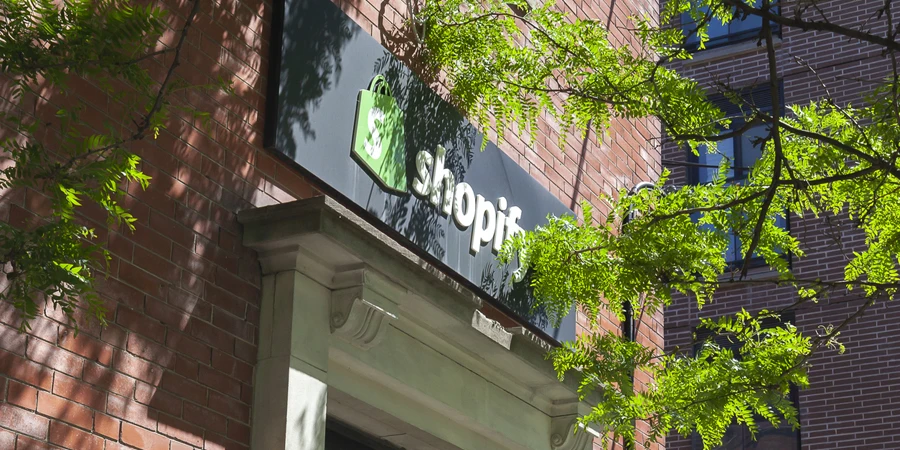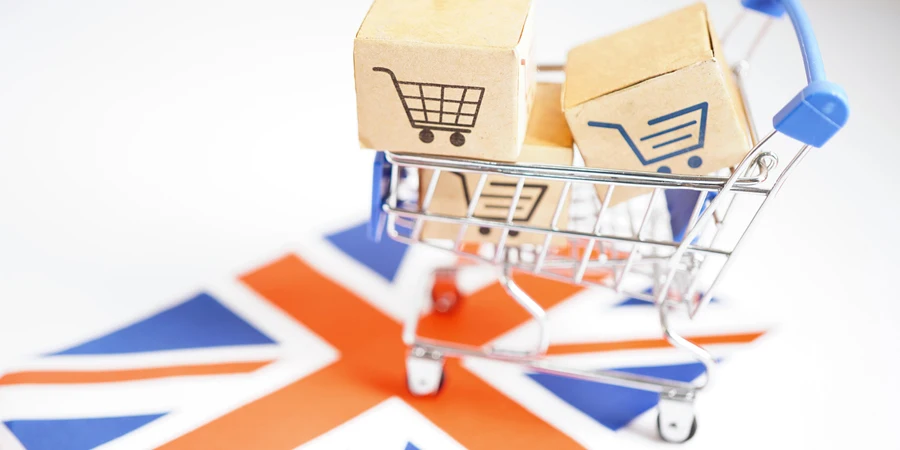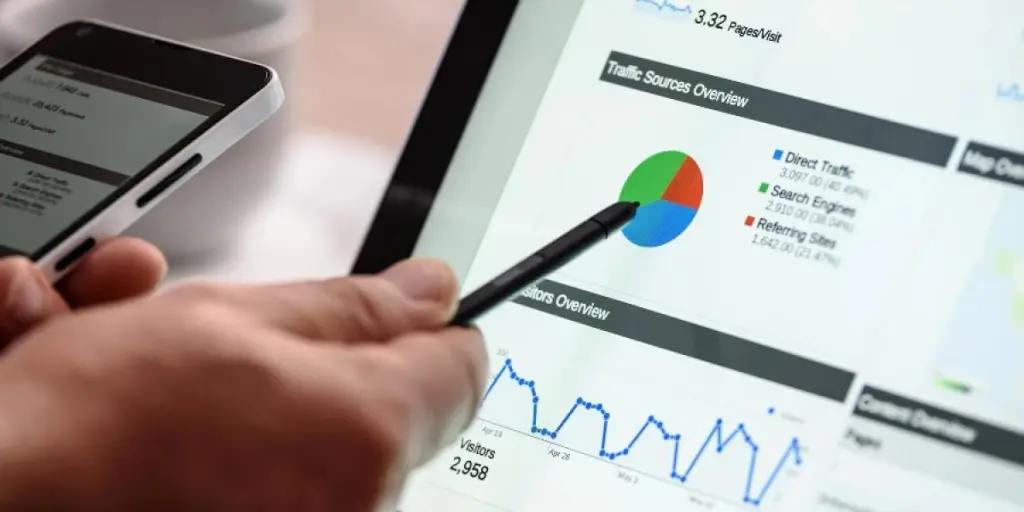Table of Contents
1. What is browse abandonment email, and why is it so effective?
2. Product & browse abandonment email examples
3. Browse abandonment email subject lines
4. Cart abandonment vs. browse abandonment vs. product abandonment
5. The blueprint of browse abandonment messaging
6. Wrap up
7. FAQ
There’s no disputing the value of cart abandonment emails. However, what should one do about those potential customers who never make it as far as placing items in their carts?
Browse abandonment emails — a type of email automation triggered when visitors leave important pages — can help you re-engage with that large pool of window shoppers, take them back to your store, and recapture those lost conversions.
“With a 1,126% higher conversion rate than promotional campaigns, browse abandonment messages are getting popular as more consumers rely on them to shop.”
Omnisend Report, 2023
This guide covers some browse abandonment best practices, content ideas, and email and SMS strategies that can nurture your leads toward a sale. We’ll also share email and browse abandonment SMS examples and some of the best subject lines we’ve seen recently.
What is browse abandonment email, and why is it so effective?
Browse abandonment emails are automated messages sent to email subscribers who were viewing products on your website but never placed an item in their shopping cart. Sending such emails, or text messages, is an opportunity for marketers to get those known contacts to complete the purchase.
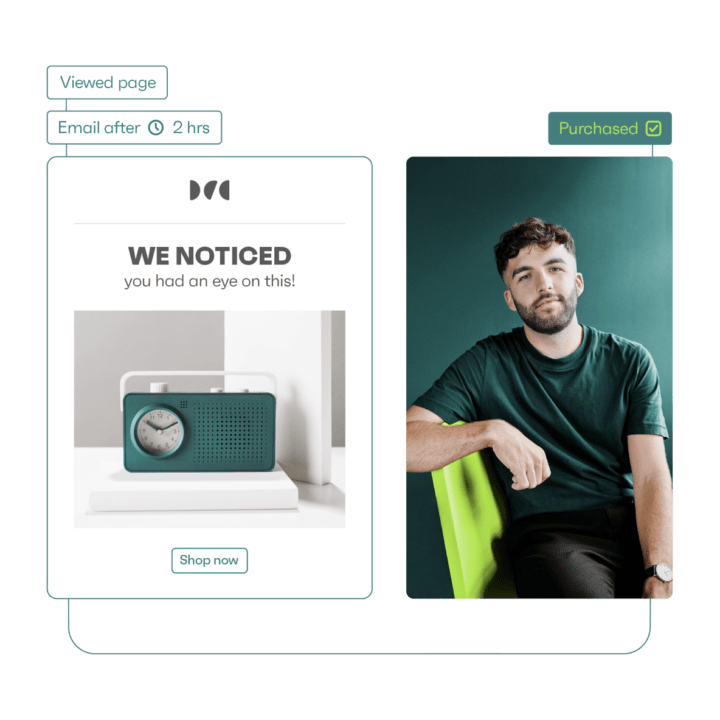
With browse abandonment emails, merchants can automate relevant messages to these window shoppers to remind them of their initial interest in their products. And since these messages are sent to email subscribers, they can utilize customer data to further personalize the messages, such as with product recommendations or incentives, based on purchase history.
Browse abandonment emails are perfect for engaging customers in the middle of their customer purchase journey — and they work. Imagine a simple yet friendly email message saying: “Hey! Do a double-take. This iconic apparel won’t stick around forever!” can re-engage an abandoned shopper — and save on paid retargeting costs.
In general, these browse abandonment emails are often some of the most profitable messages sent from retailers’ email marketing programs.
One fashion & apparel retailer sending browse abandonment emails through Omnisend finds them to be the most successful messages of their email program.
Indeed, browse abandonment emails saw a significant surge in 2023, with brands nearly doubling the number of such emails sent compared to the previous year.
These emails saw an 89.4% year-over-year increase in send volume and maintained impressive performance metrics. In particular, it achieved a 31.1% open rate and a 3.3% click rate, while orders resulting from these emails increased by 50.8%.
Here’s how they compared.

Product & browse abandonment email examples
Later in the article, we’ll discuss the blueprint of product abandonment and abandoned browse emails, but first let’s look at a few browse abandonment email examples in action.
Note that they all contain a short copy, include the abandoned products, and link to popular products on their sites.
1. Asos
One of the best browse abandonment examples comes from Asos. Notice that they’ve listed six products, a CTA to trending products, and links to popular brands.
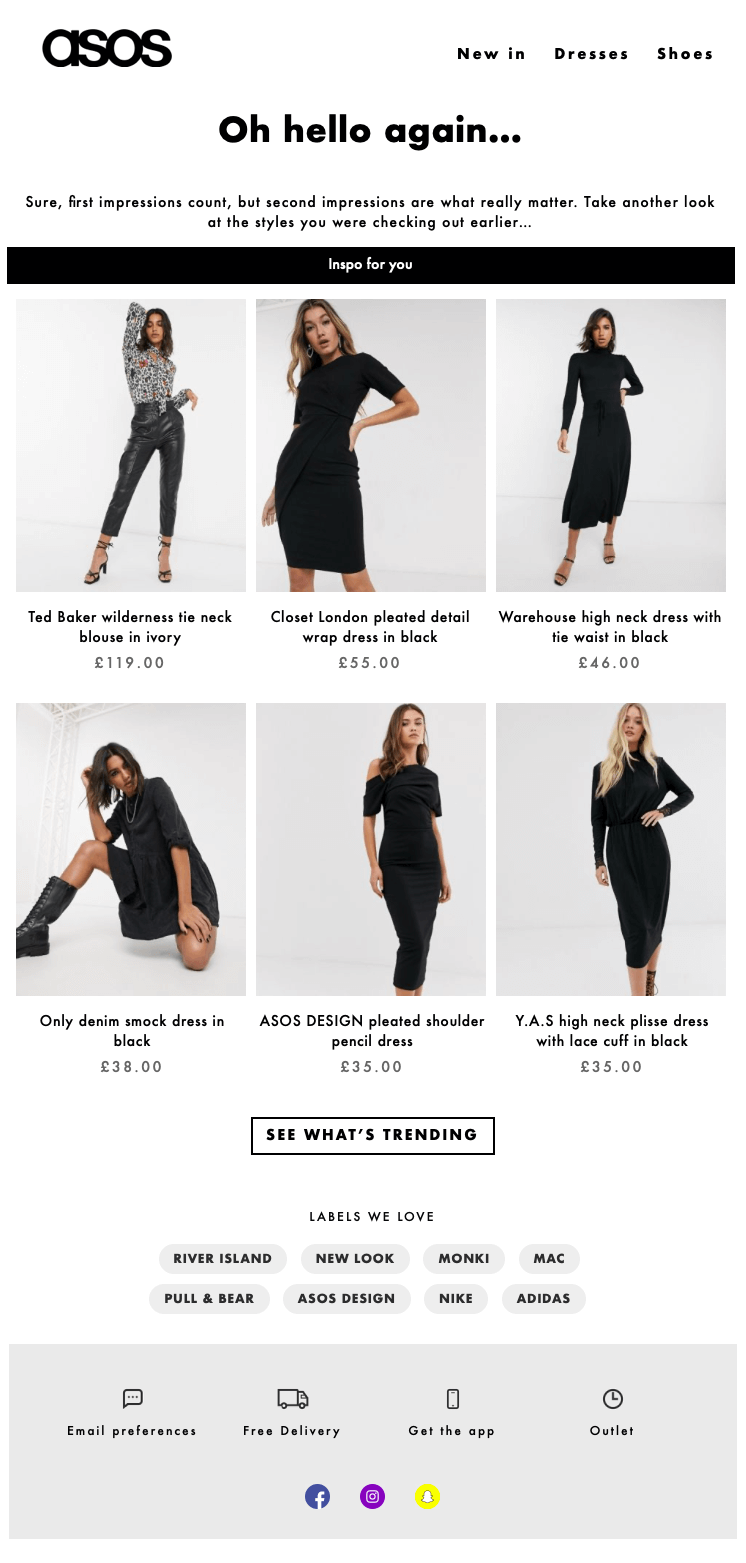
2. Silver Street Jewellers
Silver Street Jewellers’ browse abandonment email utilizes a good amount of browse abandonment best practices, including a straight-to-the-point hero image and text, the items viewed, and links to other popular products.

3. Famous Footwear
More browse abandonment email examples for you — this time from Famous Footwear, which shows the single item viewed, plus the marked down price (alongside the regular price).
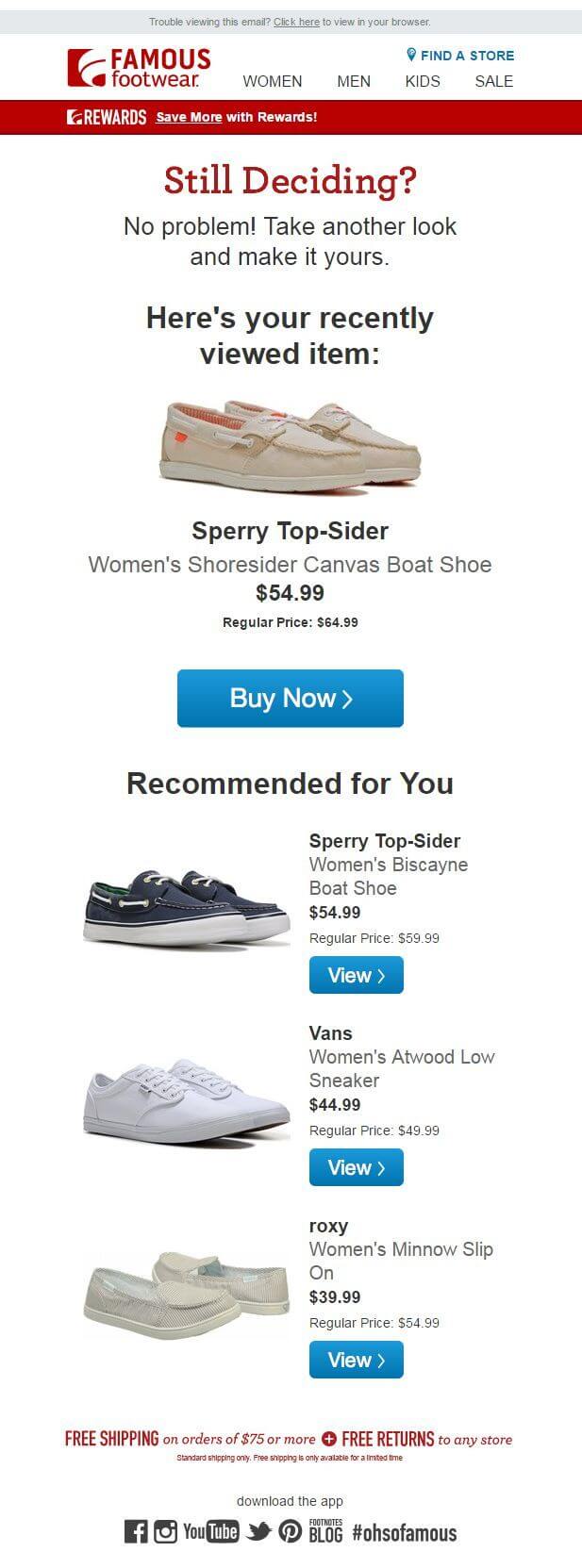
4. Debenhams
Debenhams shows a similar trend as the other browse abandonment email examples, with the viewed item, plus a nice, catchy headline.
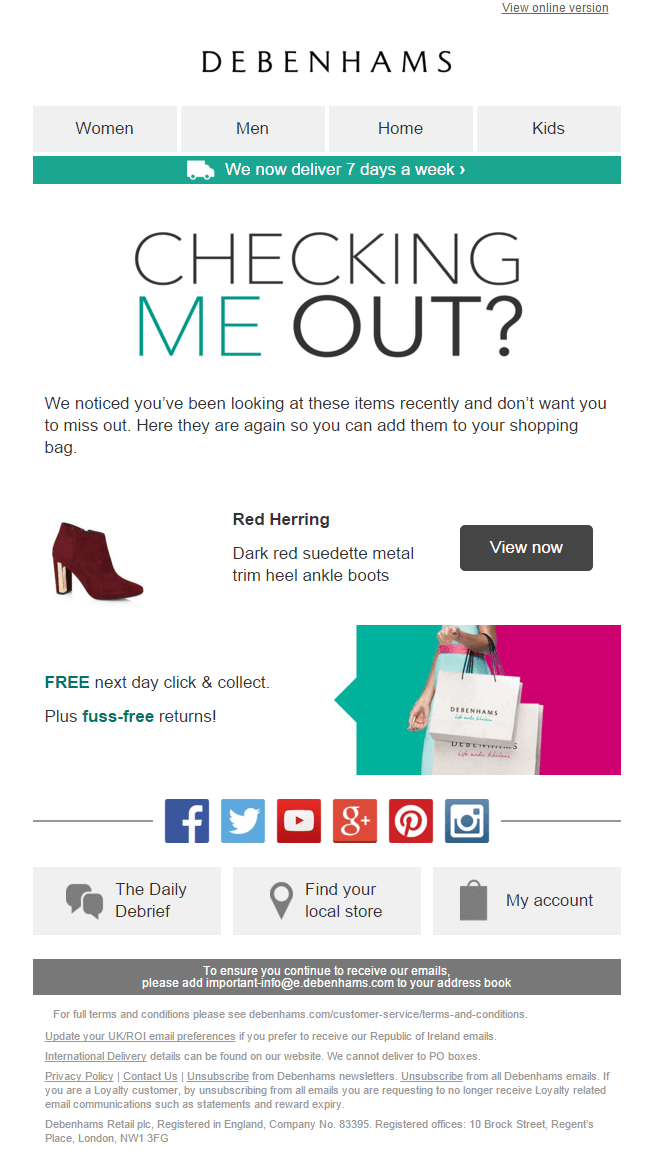
5. Gorsuch
Gorsuch sticks with the browse abandonment best practices as well, with short text, highlighted viewed items, and not much else that can potentially distract the recipient.
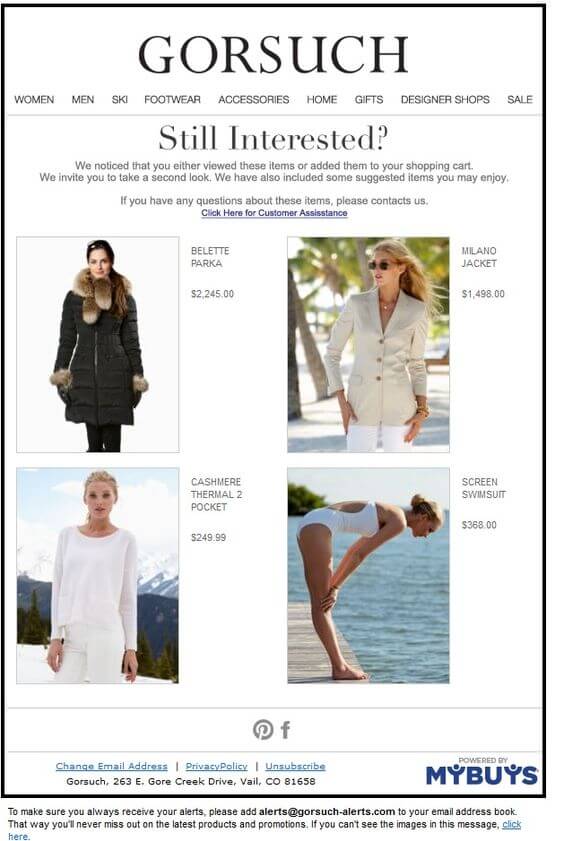
6. Pulp & Press
Similarly, Pulp & Press keeps it clean and straightforward, with a nice headline and image, and the abandoned browse item.
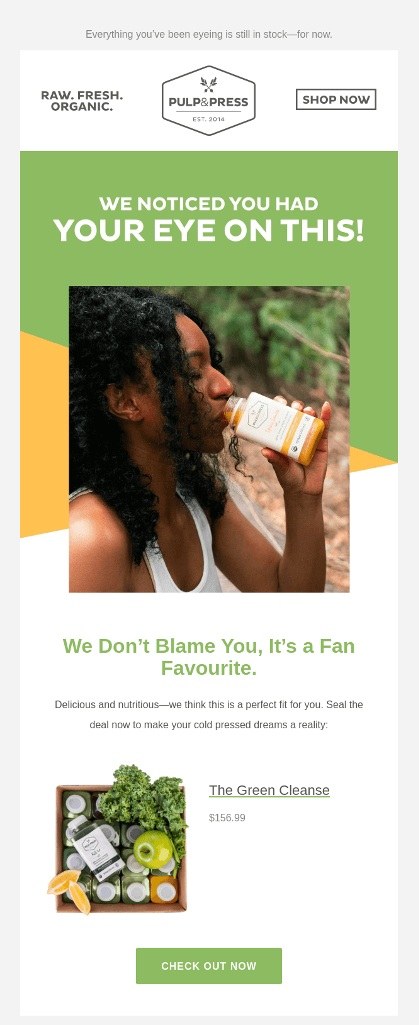
7. On
On gets straight to the point, not only listing the viewed items, but also offering free shipping in the short description.
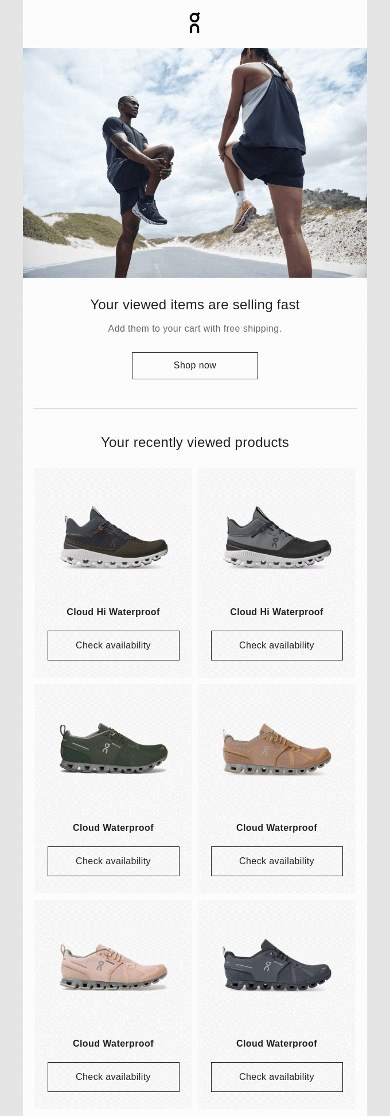
Browse abandonment email subject lines
These are 10 browse abandonment specific subject lines that caught our eye and might be worth testing with your audience:
- Did something catch your eye?
- Did you want it?
- ✨Picked only for you ✨
- Take a second look!
- Did you have your eye on these? 🛍️
- [Customer name] – you have great taste!
- We must say you have good taste ❤️
- Do a double-take
- Is this your next [product name]?
- Were you checking us out?
No matter whether it’s these or other browse abandonment subject lines that you choose, don’t forget to make them short and compelling. This way, recipients will be intrigued to open and check out what’s inside.
Want to see how your browse abandonment email subject lines perform? Try our free Email Subject Line Tester
Cart abandonment vs. browse abandonment vs. product abandonment
Although these three messages sound similar they each work a bit differently. Let’s take a closer look at each and figure out how they’re different.
- Cart abandonment emails: Sent to shoppers who place items in their shopping carts but leave without completing their purchase
- Browse abandonment emails: Messages that are triggered when a visitor lands on any page or product category on your site
- Product abandonment: A form of browse abandonment where messages are triggered when a visitor lands on a specific product page
Cart abandonment
Cart abandonment messages are some of the best converting messages retailers’ send from their email programs. After all, they target shoppers who couldn’t come any closer to making a purchase.
Even though the average add-to-cart rate is only 10.9%, meaning your pool of shoppers eligible to receive abandoned cart emails is only one-tenth of your site traffic (even less if you don’t have their email addresses), the messages generate high revenue because the recipients’ purchase intent is high — making these essential messages for any retailer.
Browse abandonment
Now, with browse abandonment messages, the rule remains the same — you can approach only those visitors you can identify as contacts in your email list.
But because they don’t need to place any items in their cart, the pool of eligible people you’re able to target with browse abandonment emails is much larger. Although the messages won’t be quite as targeted as with cart abandonment emails, the content will be based on what the visitor viewed on your website. Sending these segmented messages to a larger audience will help increase sales.
Product abandonment
With product abandonment, messages are triggered when the visitor lands on the product page only, meaning the customer has shown interest in a specific product. This allows you to send more targeted messages than you would with a general browse abandonment strategy. And even though you may send fewer messages because of it, they are more targeted and more likely to convert.
To get a better understanding of the size of the audience and how each perform, see an example of an Omnisend client who recently launched all three workflows on the same day:

As you can see, because browse abandonment and product abandonment messages are targeted and timely, they are relevant for the audience. So they worked well in converting window shoppers into actual customers. By waiting until visitors place something into the cart, you’re leaving money on the table.
Now that we’ve identified the value of browse abandonment messaging, how do we make one that appeals to customers?
The blueprint of browse abandonment messaging
A browse abandonment workflow doesn’t have to be a multiple-message series. Shoppers who just browsed your store may or may not have a high intention to buy. Sending them one or two kind reminders should be, in most cases, enough to spur a follow-up action.
Retailers who set up browse and product abandonment automation often use a combination of one email and automated text message. Some even send only a single SMS message, which might look like this:
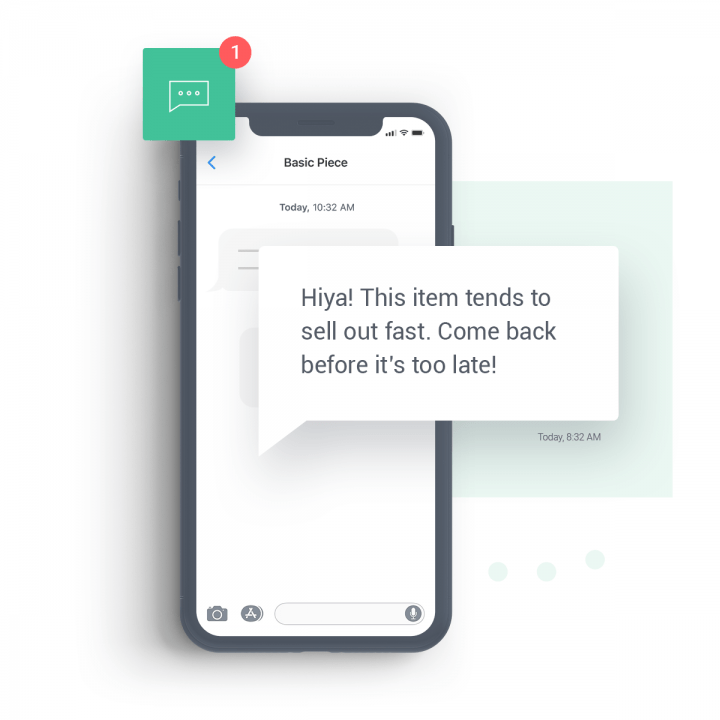
However, as part of the browse abandonment best practices, we recommend utilizing both email and SMS together. In the email, you can highlight your perks and abandoned products and better target your customer groups according to their previous shopping and on-site behavior. It might be worth segmenting and tailoring different messages to loyal customers and shoppers who have never purchased.
Another idea for browse abandonment messages is to send them only for high-priced products. In these cases, you might highlight customer support options, such as live chat, to assist with any questions, and to extend the workflow due to a longer decision-making window.
Here’s an example of what this browse abandonment workflow might look like.
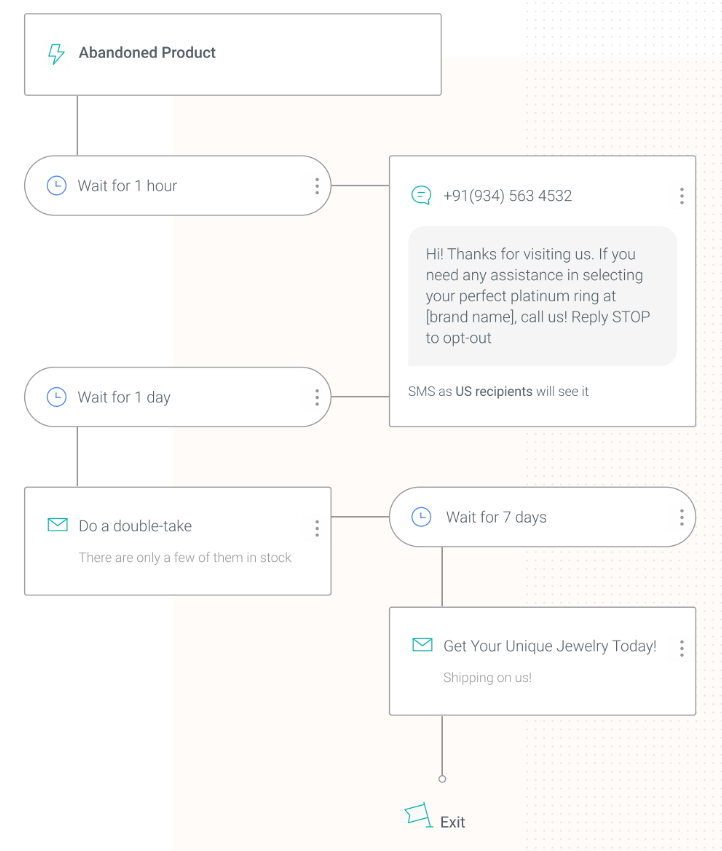
When designing your abandonment workflow, you might want to consider a few browse abandonment best practices:
- Use short and sweet copywriting and apply directly to their intention. Something like, “Hey, do a double-take,” or “Did something catch your eye?” Remember, it’s a friendly reminder, not a “buy or die” campaign
- In your email, include products that were actually abandoned
- Include your best sellers. If these products are so popular, they are worth being highlighted
- Don’t miss your opportunity to highlight your perks: free shipping, easy returns, loyalty rewards, and more
- Don’t feel obligated to offer discounts. Save them, if needed, when their purchase intent becomes more pronounced
Wrap up
Creating browse abandonment automation might seem like a daunting task for marketers, but with the right tools and browse abandonment best practices available, it’s never been easier. There’s plenty that can be done to tackle it, and understanding the differences between them and how to best send these targeted browse/product abandonment messages is a great start.
Automated, behavior-based messages sent via email and SMS is the definition of sending the right message, to the right consumer, via the right channel, at the right time — and the numbers prove it.
FAQ
1. How does a browse abandonment email work?
Browse abandonment emails work by using automation to re-engage potential customers, reminding them of the items they viewed but didn’t add to their cart. The goal is to encourage these shoppers to return and complete the purchase.
2. How do you write a browse abandonment email?
Include a personalized, attention-grabbing subject line, images and descriptions of the products the customer viewed, and a clear, compelling call-to-action to return to the site and buy. You can also consider including an incentive, such as a discount code, and creating a sense of urgency. Also, ensure your email is visually appealing and optimized for mobile devices.
3. How many browse abandonment emails should I send?
Send two to three browse abandonment emails as part of a sequence, spaced out over a few days. Too many emails can be perceived as spammy, while a single email may get overlooked. Experiment and track open rates to find the sweet spot.
4. When should I send a browse abandonment email?
The first browse abandonment email should be sent an hour after the customer leaves your site. Follow-up emails can be sent 12 to 24 hours later and, if needed, a few days after that. The optimal send times will vary based on your audience’s behavior patterns, so take this into consideration as well.
5. How successful are browse abandonment emails?
Browse abandonment emails have proven to be highly effective, with open rates around 30%, click rates around 3%, and conversion rates typically between 0.3–0.5%. They can drive a significant raise in orders when executed correctly as part of your automated remarketing strategy.
Source from Omnisend
Disclaimer: The information set forth above is provided by omnisend.com independently of Chovm.com. Chovm.com makes no representation and warranties as to the quality and reliability of the seller and products.

